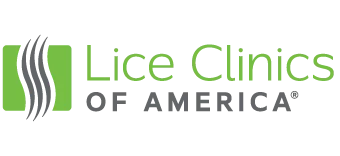Get to Know Head Lice Symptoms from Lice Clinics of America – South San Francisco
Just thinking about head lice can make you start itching. If your school or daycare center has notified you that head lice have been detected, you’ll want to check your child (and yourself) immediately. According to Huynh, owner of Lice Clinics of America South San Francisco, here are some of the signs your child may have head lice:
- Scratching: If your child is scratching his or her head more than usual, it may be time to check for lice. The most common symptom of head lice is itching. This is because lice bites can cause an allergic reaction in 50% of people, which stimulates the itchy sensation. However, it can take a few weeks for this symptom to develop.
- Tickling sensation: Some children experience a “tickly” feeling from lice bites or from lice touching their skin. This is a less severe reaction than the itching.
- Sores or scratch marks: If you see sores or scratch marks on your child’s head or neck, it can be a sign your child has an active lice infestation. Children often scratch harder than they need to, which can break the skin and cause sores and scabs.
- Disruption of sleep patterns: Head lice can make sleep difficult for youngsters. If your child is having a harder time than usual going to sleep or staying asleep, that might be a sign that head lice have invaded his or her scalp.
- Irritability: If your child is more irritable than usual, this can be an indication that head lice are present. Irritability often coincides with chronic itchiness and sleeplessness. These symptoms can combine, especially when an infestation is more mature.
It’s important to point out that an itchy scalp alone is not always an indication of head lice. “Dandruff, allergies, or a reaction to hair product can also cause itchiness,” said Huynh. “You can double-check to make sure the symptom isn’t head lice.”
According to the Centers for Disease Control and Prevention (CDC), misdiagnosis of head lice infestation is common. The most reliable symptom, of course, is the presence of a live louse or lice on a child’s head.
How to Spot Lice
To be sure that your child has lice, you’ll need to do a physical inspection of his or her head and neck. “It is a simple process to check for your child’s head lice,” said Huynh. “First, start at the nape area of the neck and around their ears. These are the locations where lice are most likely to live. They stay very near the scalp to stay warm, about a quarter of an inch from the skin. Separate the hair as finely as possible. It helps to wet the hair first as it takes care of the wispy hair. Head lice are about the size of a sesame seed. They can be difficult to see, so some people suggest using a magnifying glass if you have one. If you have a louse comb, run it through the hair multiple times, wiping it on a paper towel after each pass. Inspect the paper towel to see if you pull head lice or nymphs (young lice) from the hair. You’re three to five times more likely to accurately diagnose a lice infestation if you comb first, versus just visually inspecting the hair.”
About Eggs (Nits)
Identifying and removing live lice is just one step in the lice treatment process. “If all eggs (nits) are not killed or removed, they will hatch, and you’ll have a fresh case of head lice on your hands. Therefore, it is very important to identify and remove all eggs,” said Huynh. “Lice eggs are tiny, camouflaged, and they stick with a strong glue-like substance to the hair. Finding and removing eggs, also known as nitpicking, is best done using a fine-toothed comb.” Nits are often confused with other particles found in hair such as dandruff, hair spray droplets, and dirt particles.
Don’t Panic
“Stay calm and not panic are the most important things,” says Huynh. “While a case of head lice can be stressful and frustrating for parents and children, please keep in mind head lice do not cause serious health problems. In addition, lice infestations are completely unrelated to personal hygiene. The only reason your child has lice is because he or she had close contact with someone else that had lice. When your child has close contact with someone else that had lice, he or she would easy to get it as well. That is the only reason he or she has lice.”
The good news is new technology now makes treating head lice fast and easy. Lice Clinics of America’s AirAllé device is an FDA-cleared medical device, clinically proven to kill live lice and more than 99 percent of eggs in as little as an hour, guaranteed. To learn more or to find a clinic near you, visit www.liceclinicsofamerica.com.
Let us take care of the lice in your life. Lice Clinics of America has over 330 treatment centers in 35 countries, making it the world’s largest network of professional lice treatment centers. Lice Clinics of America – South San Francisco is located at 1001 Sneath Ln Ste 107, San Bruno, CA 94066 and is open seven days a week by appointment. Call 650-457-8009, email info@liceclinicssf.com, or visit www.liceclinicssf.com for more information or to schedule an appointment.











